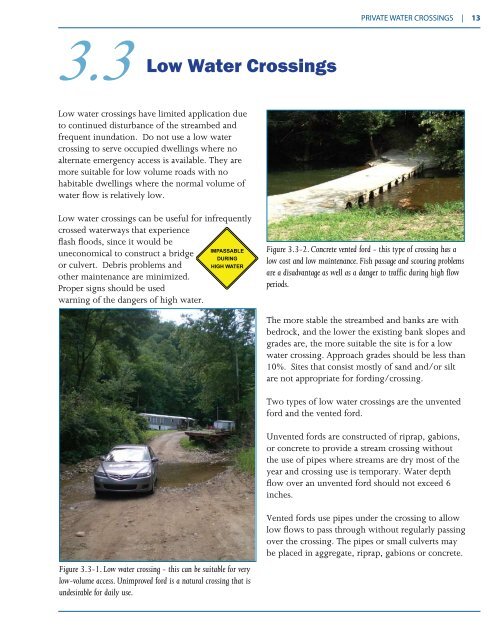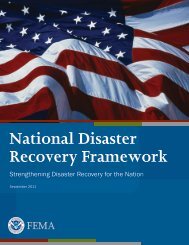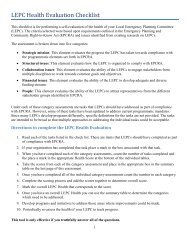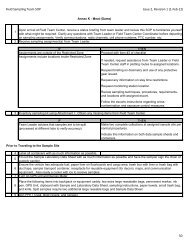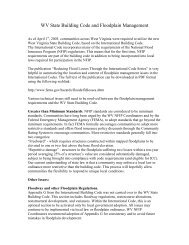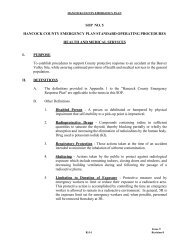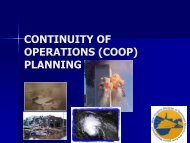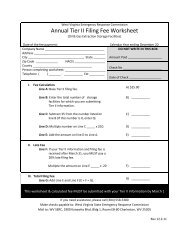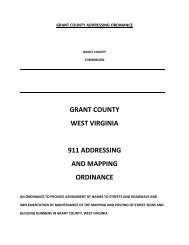Private Water Crossings: Considerations Before You Build
Private Water Crossings: Considerations Before You Build
Private Water Crossings: Considerations Before You Build
- No tags were found...
Create successful ePaper yourself
Turn your PDF publications into a flip-book with our unique Google optimized e-Paper software.
PRIVATE WATER CROSSINGS | 133.3Low <strong>Water</strong> <strong>Crossings</strong>Low water crossings have limited application dueto continued disturbance of the streambed andfrequent inundation. Do not use a low watercrossing to serve occupied dwellings where noalternate emergency access is available. They aremore suitable for low volume roads with nohabitable dwellings where the normal volume ofwater flow is relatively low.Low water crossings can be useful for infrequentlycrossed waterways that experienceflash floods, since it would beIMPASSABLEuneconomical to construct a bridgeDURINGor culvert. Debris problems andHIGH WATERother maintenance are minimized.Proper signs should be usedwarning of the dangers of high water.Figure 3.3-2. Concrete vented ford - this type of crossing has alow cost and low maintenance. Fish passage and scouring problemsare a disadvantage as well as a danger to traffic during high flowperiods.The more stable the streambed and banks are withbedrock, and the lower the existing bank slopes andgrades are, the more suitable the site is for a lowwater crossing. Approach grades should be less than10%. Sites that consist mostly of sand and/or siltare not appropriate for fording/crossing.Two types of low water crossings are the unventedford and the vented ford.Unvented fords are constructed of riprap, gabions,or concrete to provide a stream crossing withoutthe use of pipes where streams are dry most of theyear and crossing use is temporary. <strong>Water</strong> depthflow over an unvented ford should not exceed 6inches.Figure 3.3-1. Low water crossing - this can be suitable for verylow-volume access. Unimproved ford is a natural crossing that isundesirable for daily use.Vented fords use pipes under the crossing to allowlow flows to pass through without regularly passingover the crossing. The pipes or small culverts maybe placed in aggregate, riprap, gabions or concrete.


